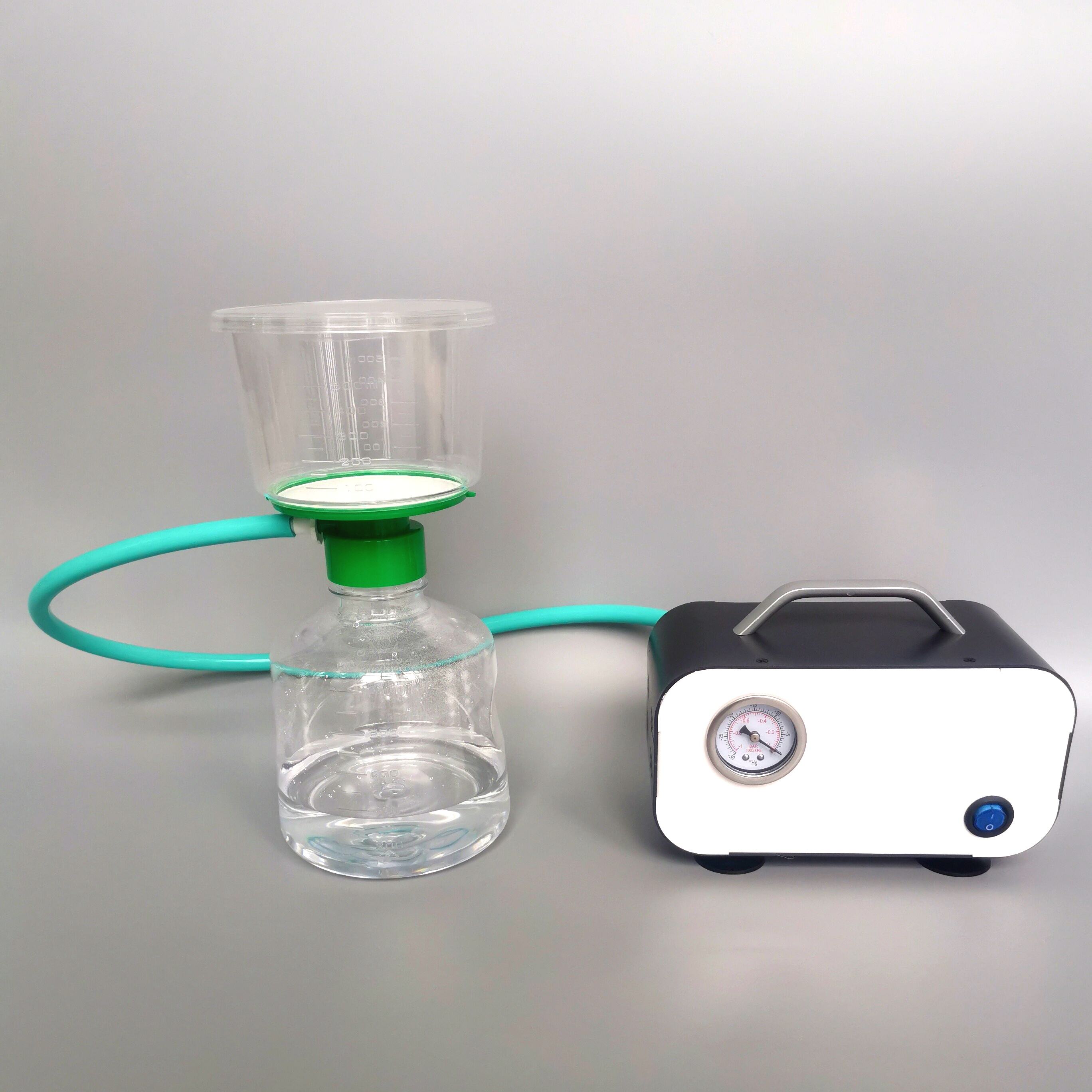Understanding Laboratory Filtration Systems and Their Critical Role
Laboratory filtration assemblies serve as the cornerstone of numerous scientific processes, ensuring the purity and precision required in modern research and analysis. These sophisticated systems combine multiple components working in harmony to separate, purify, and analyze various substances with exceptional accuracy. From pharmaceutical development to environmental testing, lab filtration assembly systems play an indispensable role in maintaining the integrity of laboratory procedures.
Essential Components of Modern Filtration Systems
Membrane Selection and Filter Media
At the heart of any lab filtration assembly lies the filtration membrane, carefully selected based on specific application requirements. These membranes come in various materials, including cellulose acetate, polyethersulfone, and nylon, each offering unique advantages for different filtration needs. The pore size, chemical compatibility, and flow rate characteristics must align precisely with the intended use to ensure optimal performance.
Modern filter media technology has evolved to incorporate advanced materials that resist clogging while maintaining consistent flow rates. Manufacturers now develop specialized membrane surfaces that minimize protein binding and maximize throughput, essential features for biological sample processing and pharmaceutical applications.
Structural Framework and Support Systems
The structural integrity of a lab filtration assembly depends heavily on its support framework. High-grade materials such as borosilicate glass, stainless steel, or chemical-resistant polymers form the foundation of these systems. The support structure must withstand various chemical environments while maintaining seal integrity under different pressure conditions.
Advanced design features include ergonomic configurations that facilitate easy assembly and disassembly, crucial for maintenance and cleaning procedures. Quick-connect fittings and standardized connections ensure compatibility across different laboratory setups, enhancing the versatility of filtration systems.
Advanced Features Ensuring Reliable Performance
Pressure Control and Monitoring Systems
Modern lab filtration assembly units incorporate sophisticated pressure monitoring capabilities to maintain optimal filtration conditions. Digital pressure sensors and automated control systems help prevent membrane damage while ensuring consistent flow rates. These features become particularly crucial when handling sensitive biological samples or performing sterile filtration procedures.
Integrated pressure relief valves and flow regulators protect both the samples and the filtration system from unexpected pressure fluctuations. Real-time monitoring capabilities allow researchers to track filtration progress and maintain detailed records for quality control purposes.
Contamination Prevention Mechanisms
Reliability in laboratory filtration heavily depends on maintaining sterility and preventing cross-contamination. Advanced lab filtration assembly designs incorporate multiple safeguards, including sealed environments, sterile venting systems, and disposable components where necessary. These features ensure sample integrity throughout the filtration process.
Modern systems also feature clean-in-place (CIP) capabilities, allowing thorough sanitization without complete disassembly. This innovation significantly reduces maintenance time while ensuring consistent sterility levels between operations.
Quality Assurance and Validation Protocols
Certification Standards and Compliance
Reliable lab filtration assembly systems must meet stringent industry standards and regulatory requirements. Manufacturers implement comprehensive quality control measures throughout the production process, ensuring each component meets specifications for material composition, dimensional accuracy, and performance characteristics.
Regular validation protocols include integrity testing, particle retention verification, and chemical compatibility assessments. Documentation of these tests provides traceability and confidence in the filtration system's reliability for critical applications.
Performance Monitoring and Maintenance
Maintaining optimal performance requires regular monitoring and preventive maintenance of lab filtration assembly components. Advanced systems incorporate diagnostic tools that alert users to potential issues before they impact filtration quality. This proactive approach helps laboratories maintain consistent results while minimizing downtime.
Scheduled maintenance protocols, including seal inspections, membrane integrity tests, and calibration checks, ensure long-term reliability. Modern systems often include automated maintenance reminders and electronic documentation features to streamline these essential procedures.
Future Innovations in Filtration Technology
Smart Integration and Automation
The future of lab filtration assembly systems lies in increased automation and smart technology integration. Artificial intelligence and machine learning algorithms are being developed to optimize filtration parameters in real-time, adjusting to changing sample characteristics automatically.
Internet of Things (IoT) connectivity enables remote monitoring and control of filtration processes, while data analytics capabilities provide insights for process optimization and predictive maintenance. These advancements represent significant steps toward more efficient and reliable laboratory operations.
Sustainable Design Solutions
Environmental consciousness drives innovation in sustainable lab filtration assembly design. Manufacturers focus on developing eco-friendly materials, reducing waste through reusable components, and improving energy efficiency. These initiatives not only benefit the environment but also contribute to long-term cost savings for laboratories.
New filtration technologies explore regenerative membrane materials and closed-loop systems that minimize resource consumption while maintaining high performance standards. These developments promise to revolutionize laboratory filtration practices in the coming years.
Frequently Asked Questions
How often should lab filtration assembly components be replaced?
The replacement frequency depends on usage intensity, types of samples processed, and environmental conditions. Generally, membrane filters should be replaced after each use or when pressure differential indicates clogging. Support components typically require replacement annually or when signs of wear appear. Always follow manufacturer guidelines and maintain detailed replacement records.
What factors affect filtration efficiency in laboratory settings?
Multiple factors influence filtration efficiency, including membrane pore size, sample characteristics, pressure conditions, temperature, and system cleanliness. Proper maintenance, regular calibration, and adherence to standard operating procedures help optimize efficiency. Environmental conditions and operator training also play crucial roles in maintaining consistent performance.
How can laboratories ensure optimal sterilization of filtration systems?
Effective sterilization requires following validated protocols specific to the filtration system and application. Common methods include autoclaving, chemical sterilization, or gamma irradiation for disposable components. Maintaining aseptic technique during assembly and operation, along with regular sterility testing, ensures continued system reliability.
What are the latest developments in sustainable filtration technologies?
Recent innovations focus on developing biodegradable filter materials, implementing energy-efficient designs, and creating smart systems that optimize resource usage. Advanced membrane technologies with extended lifespans and improved regeneration capabilities are emerging. Additionally, manufacturers are introducing recycling programs for used components and exploring novel materials that reduce environmental impact.




